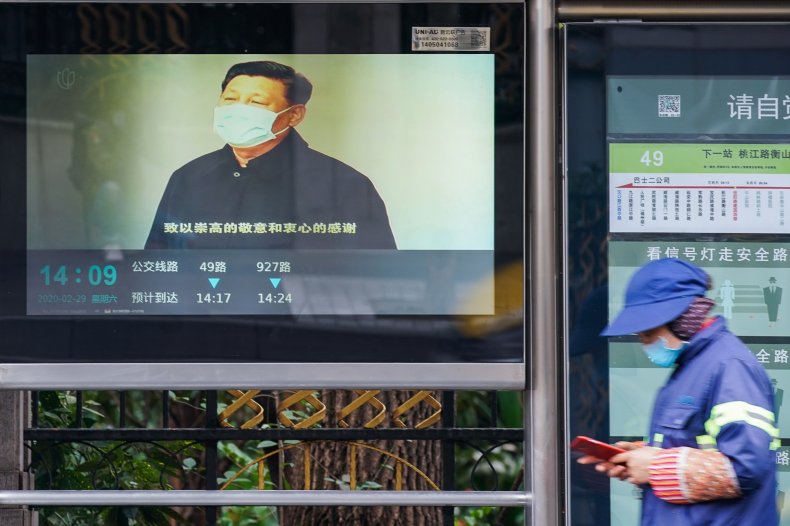The Complexities Of Elon Musk's Autonomous Vehicle Strategy

Table of Contents
Technological Hurdles in Achieving Full Autonomy
The dream of fully autonomous vehicles hinges on overcoming significant technological barriers. The challenges are multifaceted and deeply intertwined, demanding breakthroughs across several key areas.
Sensor Fusion and Data Processing
Successfully navigating complex real-world scenarios requires the seamless integration of data from multiple sensors. Autonomous vehicles typically rely on a combination of cameras, lidar (light detection and ranging), and radar to perceive their surroundings. The challenge lies in fusing this data accurately and efficiently.
- Limitations of current sensor technology: Existing sensors struggle in adverse weather conditions (heavy rain, snow, fog) and with objects that are difficult to detect, such as pedestrians in low-light situations.
- Computational power requirements: Processing the massive amounts of data generated by these sensors in real-time demands immense computational power, requiring advanced and energy-efficient hardware.
- Challenges in dealing with unpredictable environments: Unpredictable human behavior, sudden road hazards, and unexpected events necessitate algorithms capable of responding intelligently and safely in a wide variety of situations.
Artificial Intelligence and Machine Learning
Artificial intelligence (AI) and machine learning (ML) are the core technologies powering autonomous driving. These algorithms are trained on vast datasets to recognize objects, predict their movements, and make driving decisions. However, training robust and reliable AI systems for autonomous driving remains a major hurdle.
- Data bias in training sets: Biases in the training data can lead to flawed decision-making by the AI, particularly in underrepresented scenarios.
- Difficulty in handling edge cases: Autonomous driving systems must handle a vast array of rare and unpredictable situations, commonly known as "edge cases," which are difficult to anticipate and train for.
- The need for continuous learning and improvement: The algorithms need to constantly learn and adapt to new situations and improve their performance over time, requiring ongoing data collection and model updates.
Ethical and Legal Considerations
The ethical and legal implications of autonomous vehicles are profound and far-reaching. The decisions made by these systems can have life-altering consequences, creating a need for a robust ethical framework and clear legal guidelines.
- Liability in case of accidents: Determining responsibility in the event of an accident involving an autonomous vehicle is a complex legal issue that remains unresolved in many jurisdictions.
- Data privacy concerns: Autonomous vehicles collect vast amounts of data about their surroundings and occupants, raising concerns about data privacy and security.
- Regulatory approval processes: The regulatory landscape for autonomous vehicles is still evolving, with different jurisdictions implementing varying requirements and approval processes.
- Public acceptance and trust: Widespread adoption of autonomous vehicles requires public acceptance and trust in their safety and reliability.
Tesla's Approach and its Challenges
Tesla's approach to autonomous driving, centered around its Autopilot and Full Self-Driving (FSD) systems, is distinct from many competitors. However, its strategy also faces unique challenges.
Tesla Autopilot and Full Self-Driving (FSD)
Autopilot offers advanced driver-assistance features like adaptive cruise control and lane keeping assist, while FSD aims for full autonomy. However, FSD is still under development and has been subject to considerable criticism regarding its safety and reliability due to its beta testing program.
- Features of Autopilot and FSD: Autopilot provides driver assistance features, whereas FSD aims for full self-driving capability, albeit with limitations.
- Limitations and safety concerns: Both systems require constant driver supervision, and limitations exist, especially in complex driving scenarios. Incidents involving FSD beta have raised safety concerns.
- The role of human supervision: Current Tesla autonomous driving features still require active driver supervision and intervention.
- Frequent software updates and improvements: Tesla frequently releases software updates that aim to improve the performance and capabilities of its autonomous driving systems.
Data Acquisition and Fleet Learning
Tesla utilizes a "fleet learning" approach, collecting data from its millions of vehicles to improve its AI algorithms. This offers scalability, but also presents challenges.
- Scalability of data collection: Tesla's large fleet provides a massive dataset for training, an advantage over competitors with smaller fleets.
- Data privacy considerations: Collecting and utilizing vast amounts of driving data raise significant data privacy and security concerns.
- Potential biases in the data: Data collected from a specific geographic area or demographic may introduce biases into the training data, impacting performance in other areas.
- Challenges in data anonymization: Protecting the privacy of drivers while using their data for training purposes requires sophisticated anonymization techniques.
The Promise of Robotaxis
Musk envisions a future where Tesla vehicles operate as a robotaxi network, transforming transportation and creating new economic opportunities. This, however, faces immense hurdles.
- Infrastructure requirements: Widespread robotaxi deployment requires robust infrastructure, including charging stations and reliable communication networks.
- Market competition: Tesla faces intense competition from established players and startups in the robotaxi market.
- Economic viability: The economic viability of a large-scale robotaxi service depends on factors like operational costs, maintenance, and insurance.
- Public acceptance and regulatory approval: Public acceptance and regulatory approval are crucial for the successful deployment of robotaxi services.
Competition and the Future of Autonomous Driving
Tesla is not alone in the race to develop autonomous vehicles. Several other companies are pursuing this technology, each with its unique approach.
Key Players in the Autonomous Vehicle Market
Companies like Waymo, Cruise, and others are also heavily invested in autonomous driving technology, employing diverse strategies.
- Comparison of different technologies (e.g., lidar vs. camera-based systems): Different companies utilize varying sensor technologies and approaches to AI development.
- Business models and strategies: Companies employ different business models, such as robotaxi services versus supplying autonomous driving systems to other manufacturers.
- Market share and competitive landscape: The autonomous vehicle market is highly competitive, with companies vying for market share and technological leadership.
The Timeline for Full Autonomy
Predicting the timeline for widespread adoption of fully autonomous vehicles is challenging, depending on several factors.
- Technological advancements: Further technological advancements are crucial for overcoming the remaining technical hurdles.
- Regulatory approvals: Regulatory approval processes can significantly impact the deployment timeline.
- Public acceptance: Public trust and acceptance of autonomous vehicles are essential for widespread adoption.
- Infrastructure development: Adequate infrastructure, including charging networks and communication systems, is necessary to support large-scale deployment.
Conclusion
Elon Musk's autonomous vehicle strategy, while ambitious, is navigating a complex landscape of technological, ethical, and regulatory challenges. Achieving true full self-driving capability requires significant breakthroughs in sensor technology, AI, and data processing. Tesla's approach, while innovative, faces its own unique hurdles, including safety concerns surrounding FSD beta and the need to address data privacy issues. The competitive landscape is intense, with numerous players vying for dominance. The timeline for widespread adoption remains uncertain, dependent on technological advancements, regulatory approvals, and public acceptance. Stay informed on Elon Musk's autonomous vehicle strategy and follow the latest advancements in autonomous driving technology to understand the transformative potential and ongoing complexities of this revolutionary field. Learn more about the complexities of self-driving car development and its impact on the future of transportation.

Featured Posts
-
 Eurovision 2025 Semi Final Running Orders Announced
Apr 25, 2025
Eurovision 2025 Semi Final Running Orders Announced
Apr 25, 2025 -
 Arsenal Transfer News Journalist Updates On Two Bundesliga Targets
Apr 25, 2025
Arsenal Transfer News Journalist Updates On Two Bundesliga Targets
Apr 25, 2025 -
 Discover Europes 10 Best Retail Experiences
Apr 25, 2025
Discover Europes 10 Best Retail Experiences
Apr 25, 2025 -
 Xi Jinpings China Increasing Pain Tolerance For A Lengthy Trade War With The Us
Apr 25, 2025
Xi Jinpings China Increasing Pain Tolerance For A Lengthy Trade War With The Us
Apr 25, 2025 -
 Cassidy Hutchinson Memoir A Fall 2024 Release On Her Jan 6 Testimony
Apr 25, 2025
Cassidy Hutchinson Memoir A Fall 2024 Release On Her Jan 6 Testimony
Apr 25, 2025
Latest Posts
-
 Uk Eurovision Entry Remember Monday Transforms Online Hate Into Music
Apr 30, 2025
Uk Eurovision Entry Remember Monday Transforms Online Hate Into Music
Apr 30, 2025 -
 The X Files Duo Gillian Anderson And David Duchovny Reunite At Sag Awards
Apr 30, 2025
The X Files Duo Gillian Anderson And David Duchovny Reunite At Sag Awards
Apr 30, 2025 -
 Ben Afflecks Upcoming Movie Features High Octane Shootout With Gillian Anderson
Apr 30, 2025
Ben Afflecks Upcoming Movie Features High Octane Shootout With Gillian Anderson
Apr 30, 2025 -
 Duchovny And Andersons Surprise Sag Awards Reunion
Apr 30, 2025
Duchovny And Andersons Surprise Sag Awards Reunion
Apr 30, 2025 -
 X Failu Zvaigzdes Atskleidziamos Uzkulisiu Paslaptys
Apr 30, 2025
X Failu Zvaigzdes Atskleidziamos Uzkulisiu Paslaptys
Apr 30, 2025
